You live you learn, you love you learn
You cry you learn, you lose you learn
You bleed you learn, you scream you learn
Alanis Morissette*
——— scroll down for English version ——–
Entlang der wunderschönen Ostküste Tanzanias am indischen Ozean verläuft nahezu parallel vom im Norden gelegenen Dar es Salaam eine Teerstraße bis nach Lindi. Folgt man dieser Straße weiter nach Süden, erreicht man schnell eine große Gabelung, an der sich wie so oft ein kleines Dorf namens Mnasi Moja entwickelt hat, das von der Versorgung des dort Pause machenden Durchgangsverkehrs lebt.
Fährt man an der Küste entlang weiter, erreicht man Mtwara, die mit der Regionalverwaltung, verhältnismäßig viel Industrie und dem nächsten funktionierenden Verkehrsflughafen die Hauptstadt der südlichen Zone darstellt.
Biegt man aber an der Gabelung nach Westen ab, gelangt man ins Hinterland: vorbei an den von der katholischen Mission geprägten Städten Nyangao (mit dem Missionskrankenhaus St. Walburg) und Ndanda (mit dem 1906 von Tutzinger Mönchen gegründeten Benediktinerkloster und ebenfalls einem verhältnismäßig großen Krankenhaus), die sich an die Nordkante der großen Makonde-Hochebene schmiegen. Irgendwann erreicht man Songea, ist schon im südwestlichen Hochland und hat es fast bis zum Lake Malawi geschafft. Auf halber Strecke, mitten im flachen Nichts, liegt Masasi.

Der Lonely Planet schreibt zum Städtchen:
„Masasi, a scruffy district centre and the birthplace of former Tanzanian President Benjamin Mkapa, stretches out along the main road off the edge of the Makonde Plateau against a backdrop of granite hills.“
An der Nordseite der Stadt finden sich zwei kleine und zwei größere Hügel, die aus dem Flachland heraus ragen, als hätte sie ein Riese auf dem Weg zu einem richtigen Gebirge fallen gelassen. Zwischen den beiden kleineren Hügeln liegt in unseren Augen fast idyllisch das Distrikt Krankenhaus Mkomaindo und eine dazugehörige Krankenschwesterschule. Dort fanden wir geeignete Räumlichkeiten für unseren großen Mop-Up Kurs „Neonatal Care Training“.
Doch zuerst ein paar Hintergrundinformationen:
Eines der Probleme, die sich einer guten Pädiatrischen Versorgung innerhalb des Gesundheitssystem in Tansania stellen, liegt in der unzureichenden Ausbildung des medizinischen Personals, insbesondere im Bereich der Neugeborenenmedizin. Spezifische Abteilungen für Neugeborene in den südlichen Regionen gibt es erst seit 2-3 Jahren, und ein Etablieren dieser Fachbereiche war mit intensivem Training verbunden.
Leider ist der Arbeitsmarkt im Gesundheitsbereich sehr dynamisch und es mangelt an jeder Ecke an ärztlichem und pflegerischem Personal, so dass es sehr oft innerhalb eines Krankenhauses oder sogar innerhalb eines Distrikts zu sehr vielen Personalwechseln kommt, die meist fremdgesteuert (= durch eine Leitungsebene) erfolgen, oft auch einfach, weil sich der Bedarf kurzfristig ändert. Weiterhin ist das Konzept der sogenannten „Change-List“, einem regelmäßigen Rotieren des pflegerischen Personals, oftmals gegen deren Wunsch, sehr weit verbreitet. Dazu wurden vor 1 Jahr ca. 15% aller Kräfte aufgrund gefälschter Schulurkunden (auf Abitur-Niveau) entlassen, was den Personalmangel noch verschärfte.
Das alles führte dazu, dass nun, 2-3 Jahre nach den initial durchgeführten Kursen ca. 50-80% des aktuell in den Fachstationen arbeitenden Teams keine spezielle Weiterbildung zu Neugeborenenversorgung hat und damit im Berufsalltag oftmals improvisieren muss.
Aus diesem Grund stellt die Fort- und Weiterbildung des Personals einen zentralen Teil des Projektes „Maternal and Newborn Health“ der GIZ Tanzania unter dem Programm TGPS (Tanzanian German Program to Support Health) dar.
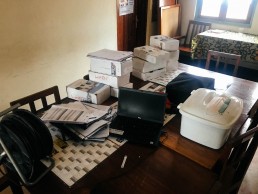
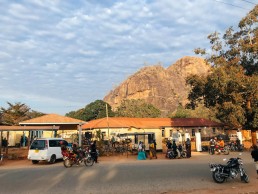
Die Herausforderung des Mop-Up-Trainings bestand darin, in vier Tagen so viel Wissen und praktische Übungen wie möglich unter zu bringen und dabei gleichzeitig die unterschiedlichen Ausbildungsstufen (von Krankenschwester-Anfängerin bis zu studiertem Medical Doctor) gleichermaßen anzusprechen.
Aus anderen Regionen hatten wir schon einige Vorerfahrungen, trotzdem waren die Vorbereitungen sehr zeitaufwändig, vor allem, weil ich ein PowerPoint-Perfektionist bin, der die didaktischen Möglichkeiten maximal ausloten möchte. So entwickelten wir einen viertägigen Plan mit Vorlesungen im Wechsel mit problemorientiertem Case-Based-Learning, Szenarios und praktischen Übungen.
Am ersten Tag lag der Schwerpunkt in Neugeborenen-Reanimation und initialem Staging mit APGAR und unserer NTC-Card, Tag 2 arbeitete sich an den drei wichtigsten Krankheitsbildern (Asphyxia, Sepsis und Gelbsucht) ab, an Tag drei ging es um Essential Newborn Care, KMC (Kangoroo Mother Care) und Füttermengen, einem durch das sehr häufige Auftreten von Frühgeburten bzw. bei Geburt untergewichtigen Babies (LBW) sehr wichtigen Thema. Tag vier beschäftigte sich abschließend mit Möglichkeiten der Qualitätsverbesserung durch IPC (infection prevention and control), MPDSR (maternal perinatal death surveillance and response) sowie gute Dokumentation und Entlassmanagement.
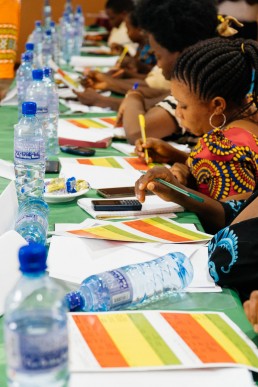
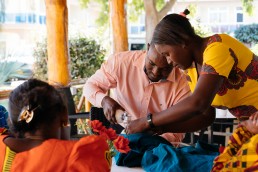
In beiden Regionen kam der Kurs sehr gut an und neben der ungewöhnlichen Präsentationsweise wurde vor allem die viele Praxis gelobt. Jetzt bin ich gespannt, wie das neue Wissen im klinischen Alltag umgesetzt werden kann und ob sich möglicherweise die Versorgungsroutine sogar verbessern kann.
Auch wenn es in Lindi und Masasi jeweils vier sehr anstrengende Tage waren und am Ende alles doch überraschend schnell vorbei war, hatten wir eine sehr schöne Zeit. Es hat großen Spaß gemacht, mit meinem Team zu arbeiten: wir hatten neben meinem GIZ-Kollegen Zamoyoni aus Mtwara zusätzlich pro Training 3 tansanische Facilitator dazu geholt, für die der Rollenwechsel zum Lehrenden zum Teil auch neu war. Aber ich hatte abschließend das Gefühl, die Euphorie, Wissen aufzubereiten und praktisch an andere zu vermitteln, sogar ein bisschen weiter gegeben zu haben. Wir stellen das für das Training erstellte Material im Anschluss den Regionen zur Verfügung und wünschen uns, dass es derartige Trainings möglicherweise in kleinerem Maßstab auch innerhalb der Kliniken geben wird.
Und nach tagelangem Nerven habe ich es auch geschafft, zwei Kollegen davon zu überzeugen, unbedingt einen der großen Berge von Masasi zu besteigen – natürlich ohne Route oder „Wanderwege“. Die Bilder finden sich in der Galerie.


Generation Smartphone
Der größte Impact, soweit man das jetzt schon sagen kann, bestand jedoch rückblickend in der Einführung einer über beide Regionen reichenden WhatsApp-Gruppe aus Kinderärzten und Kinderkrankenschwestern, ergänzt um Fachärzte aus Dar es Salaam. So erschafften wir erstmals ein grenzüberschreitendes Forum und einen sicheren Rahmen, in dem Unsicherheiten, Fragen und schwere Fälle geteilt und gemeinsam diskutiert werden können.
Eine derartige Gruppe hatten wir auch nach einem Training für das Kreisaal-Personal zur Asphyxia-Vermeidung eingeführt und die Resonanz war so positiv, dass es jetzt vom Gesundheitsministerium als Prototyp für alle anderen Regionen angewendet werden soll.
Dieses Beispiel steht für mich stellvertretend für die Herausforderung, die Entwicklungszusammenarbeit in der heutigen Zeit mit technischem Fortschritt, Digitalisierung und grenzenlosen Kommunikationsmöglichkeiten bietet: es gibt unendliche viele technische Lösungsmöglichkeiten, aber es fehlt an Geld und Personal und am Ende sind es ja echte Menschen, die das Neugeborene reanimieren müssen. Man muss also idealerweise die Art von Technologie nutzen, die bereits universell auch in „Low Income Countries“ verbreitet sind. Und irgendwie landet man am Ende fast immer beim Smartphone.
Immer mehr Entwicklungshilfe-Projekte versuchen nun, Smartphones als Allzweck-Hilfsmittel für bessere Medizin zu nutzen, sei es als direktes Tool oder als Quelle für Fortbildung und Wissen. Das ganze nennt sich dann mHealth.
Zwei spannende Beispiele:
PICTERUS
Eine norwegische Forschergruppe will durch Fotografie der Haut neben einer Farb-Karte mit dem Smartphone den Bilirubin-Gehalt abschätzen. Farbfehler des Kamera-Chips des Handys und des Umgebungslichtes (Farbtemperatur, Tonwertkurve usw.) werden durch die ebenfalls mit dem Kamera-Chip fotografierte Farbkarte herausgerechnet. Ich hatte mit dem Entwickler bereits guten Kontakt, weil das Programm in Tansania eine Pilotphase bekommen soll.
JamboMama
Ein Tool zur Kommunikation mit schwangeren Frauen in isolierten Regionen, zur Übermittlung von Wissen und Erkennung von Schwangerschaftskomplikationen.
Mehr zum Thema Digitalisierung im Gesundheitssektor in der Entwicklungshilfe demnächst…
(P)
——— English version ——–
Newborn Training (and Digitalization)
Along the wonderful east coast of Tanzania, touching the Indian Ocean, from the northern Dar es Salaam a tarmac road follows its route down to Lindi. Continuing this road further South, you will reach a junction, which lead to the ongoing growth of a village called Mnasi Moja, thriving from supplying the traffic breakers.
If you follow the road further south along the coastline, you will reach Mtwara, which is the capital of the southern region with its regional administration and an almost urban feeling, including some industrial buildings and the only regularly operated commercial airport in the region.
The road turning west leads into the hinterland: past the Catholic cities of Nyangao (with the Mission Hospital St. Walburg) and Ndanda (with the Benedictine Monastery founded in 1906 by Tutzing monks, including a large hospital) nestling on the northern edge of the great Makonde Plateau. At some point you reach Songea, which is already part of the southwestern highlands and you almost made it to Lake Malawi.
Halfway down, in the middle of flat nothingness, lies Masasi. The Lonely Planet writes:
„Masasi, a scruffy district centre and the birthplace of former Tanzanian President Benjamin Mkapa, stretches out along the main road off the edge of the Makonde Plateau against a backdrop of granite hills.“
The city is surrounded by two larger hills to the north and two smaller hills in between, that jut out of the ground as if they were dropped by a giant who was on his way building a real mountain range.
Between the smaller hills lies the district hospital Mkomaindo and its nurse school, almost idyllic to our western eyes. This was the perfect premises for our mop-up course „Neonatal Care Training“.
Before getting into detail, here is some background information:
one of the major problems of high quality pediatric care within the health care system in Tanzania is the inadequate education of medical staff, especially in neonatal medicine.
Specific departments for newborns in the southern region have only existed for about 2-3 years, and at the time they were established, a lot of intensive training was carried out.
Unfortunately, the health market is very dynamic, and there is a shortage of medical and nursing staff everywhere, so that there are many changes in personnel, often within a hospital, or even within a district, on a regular bases. Those changes are externally controlled (= by management level), often caused by changing demand, often at short notice, often without consent of the employee. In addition, the concept of the so-called „change list“, a regular routing of the nursing staff, is common.
In summer 2017, roughly 15% of all health workers were dismissed due to fake school certificates, which aggravated the staff shortage.
Considering those developments, it does not seem surprising, that now, 2-3 years after the initial training packages, 50-80% of the staff currently working in the specialist departements has no special training on neonatal care. Improvisation is part of everyday professional life. For this reason, training of the staff is a major issue in our GIZ project „Maternal and Newborn Health“.
The challenge of mop-up training was to pack as much knowledge and hands-on training as possible in four days, while addressing all the different levels of education (from nurse novice to graduate medical doctor).
Although having experience from other regions, the preparations were very time consuming, especially because I am a PowerPoint perfectionist, who wants to explore the didactic possibilities to the maximum. Therefore, we developed a four-day plan with lectures alternating with case-based learning, group work scenarios and practical exercises.
The first day focused on neonatal resuscitation and initial staging with APGAR and our NTC card, Day 2 focused on the three major diseases (asphyxia, sepsis, and jaundice), and on Day 3, we planned Essential Newborn Care, KMC (Kangoroo Mother Care) and feeding amount calculation, which is essential with frequent cases of premature / low birthweight babies. Finally, Day Four looked at Quality Improvement Methods with IPC (infection prevention and control), MPDSR (maternal perinatal death surveillance and response), and documentation and discharge management.
Even though it was four very exhausting days both in Lindi and Masasi, and in the end everything went over very quickly, we had a really good time. It was great fun to work with my team: in addition to my GIZ colleague Zamoyoni from Mtwara, I had brought in three Tanzania facilitators. In the end, I had the feeling that I was able to convey the euphoria, to edit and prepare knowledge and to convey it to others. We will make the material accessible, created for the training and do sincerely hope, that some champions will adapt those materials for such training on a smaller scale within the hospitals.
And after three days of bugging, I also managed to convince two colleagues to climb one of the large mountains of Masasi – of course without a route or „hiking trails“. The pictures can be found in the gallery.
However, the biggest impact, as far as we can tell, was the introduction of a WhatsApp group of paediatricians and pediatric nurses across both regions, supplemented by a few specialists from Dar es Salaam. For the first time, we were able to create a cross-border forum, in which questions and difficult cases can be shared and discussed together beyond uncertainty (We had introduced such a group for staff of maternity ward, after carrying out a training session on prevention of asphyxia, and the response was so positive, that this concept of an easy-access cross-border low-threshold forum, now will be adapted by the Ministry of Health as a prototype for all other regions.
Generation Smartphone
For me, this example typically represents the essential aspects of the challenge to make use of technological advances, digitalization and unlimited communication in the context of development aid: there are endless technical solutions, but there is a lack of money and staff, and in the end, you need real people to resuscitate the newborn with their hands. That means, you need a low-cost wide-range approach using the technology that is already universally used in „low income countries“. And somehow, almost always you end up with the smartphone .
More and more development aid projects are trying to make use of the smartphone as a universal tool for better medicine, either as a direct tool or as a source of training and knowledge. The whole thing is called mHealth.
Two exciting examples:
PICTERUS
A Norwegian research and start-up group wants to estimate the bilirubin content by photographing the skin with a smartphone next to a color chart. Color errors created by the camera chip of the phone and the ambient light (color temperature, tone curve, etc.) are calculated out by comparing with the colors of the chart also photographed with the camera chip. I already had great communication with the developer, since they are planning to start a pilot phase in Tanzania.
JamboMama:
A tool to communicate with pregnant women in isolated regions, to share knowledge and to early detect pregnancy complications.
Coming up: an article reflecting on digitalization and the impact on development work in the health sector..
(P)
Further Reading:
Article from BMC: https://www.ncbi.nlm.nih.gov/pmc/articles/PMC5678803/
Other mobile health improvement apps:https://mashable.com/2016/03/13/apps-maternal-health/#FE8hSUl9.gqw
An NGO article: http://www.globalproblems-globalsolutions-files.org/unf_website/assets/publications/technology/mhealth/mHealth_applications.pdf
Market Analysis: https://liquid-state.com/mhealth-apps-market-snapshot/
Hungarian page on (western) aspects of digitization in health: https://medicalfuturist.com
1 Comment
Schreibe eine Antwort zu Margarete Baar Antwort abbrechen
Diese Website verwendet Akismet, um Spam zu reduzieren. Erfahre mehr darüber, wie deine Kommentardaten verarbeitet werden.
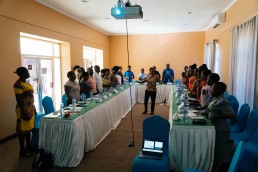
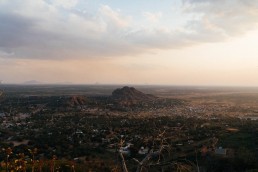
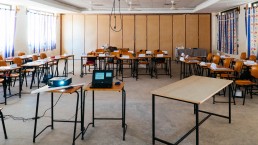
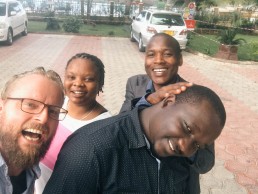
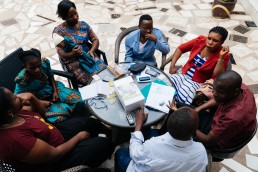
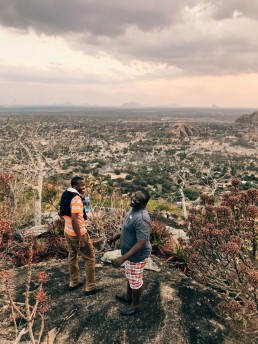
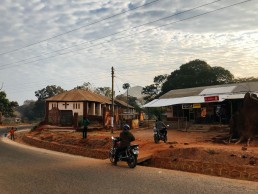
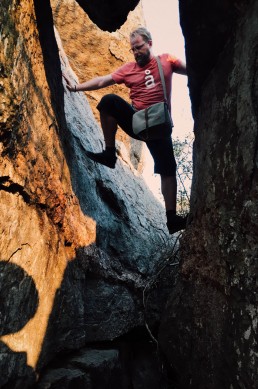
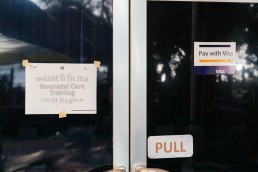
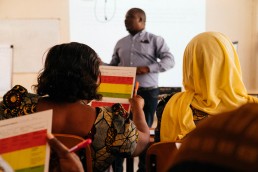
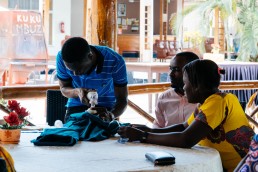
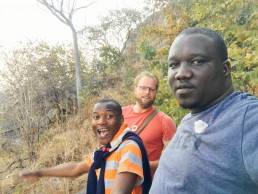
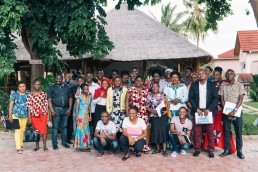

ein sehr beeindruckender Artikel und ein noch beeindruckenderes Projekt. Vielen Dank für das Mitteilen.